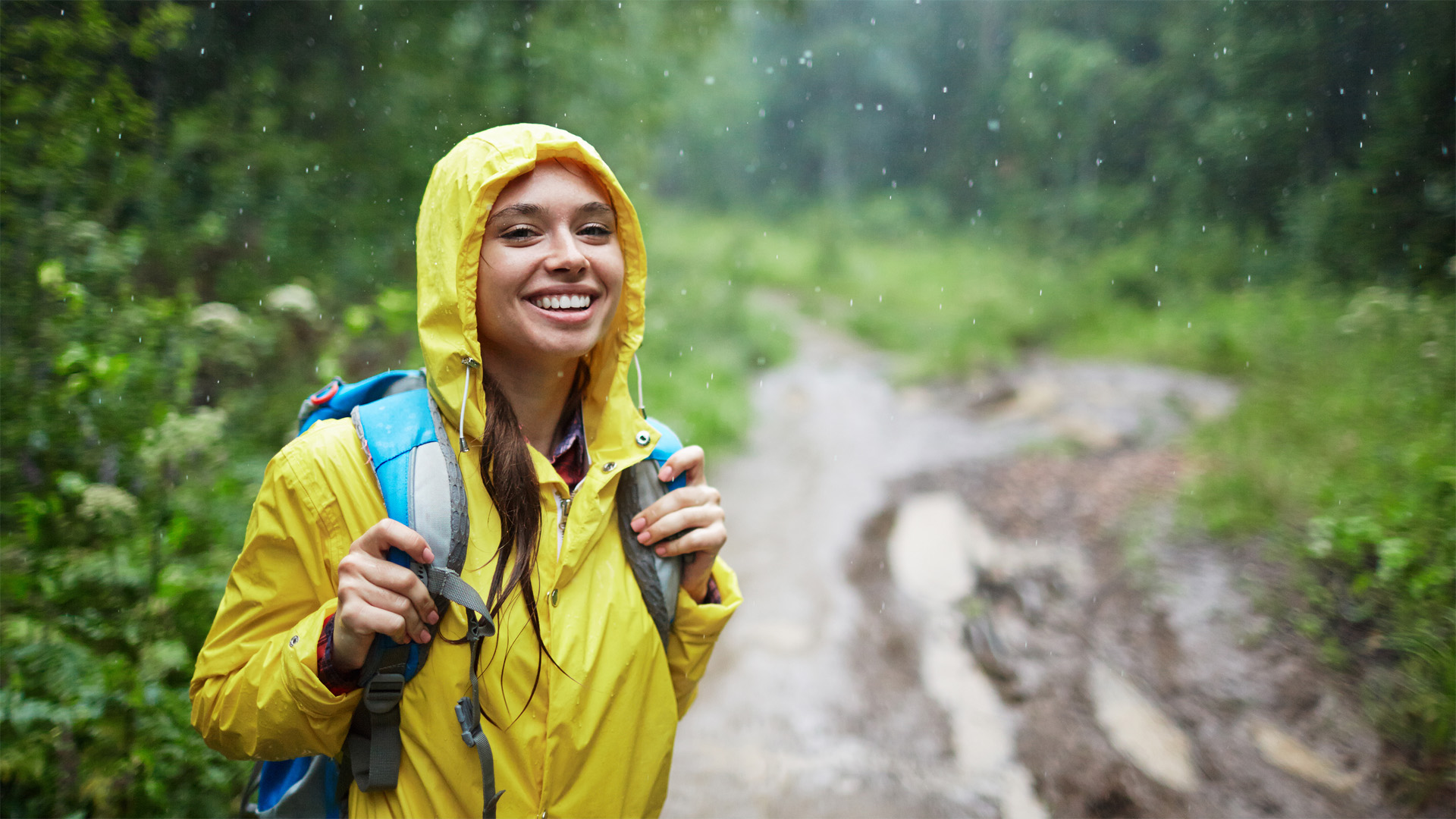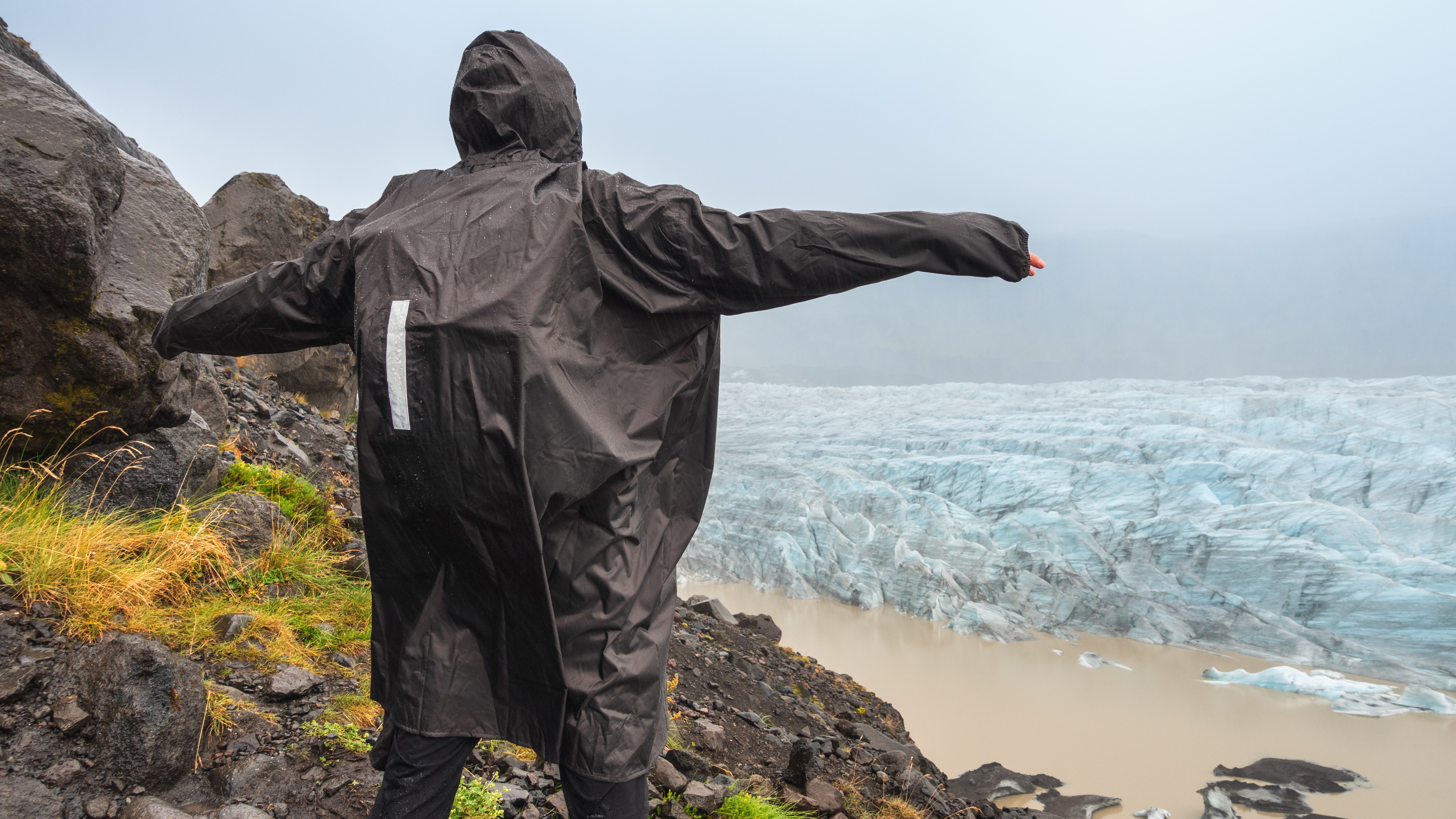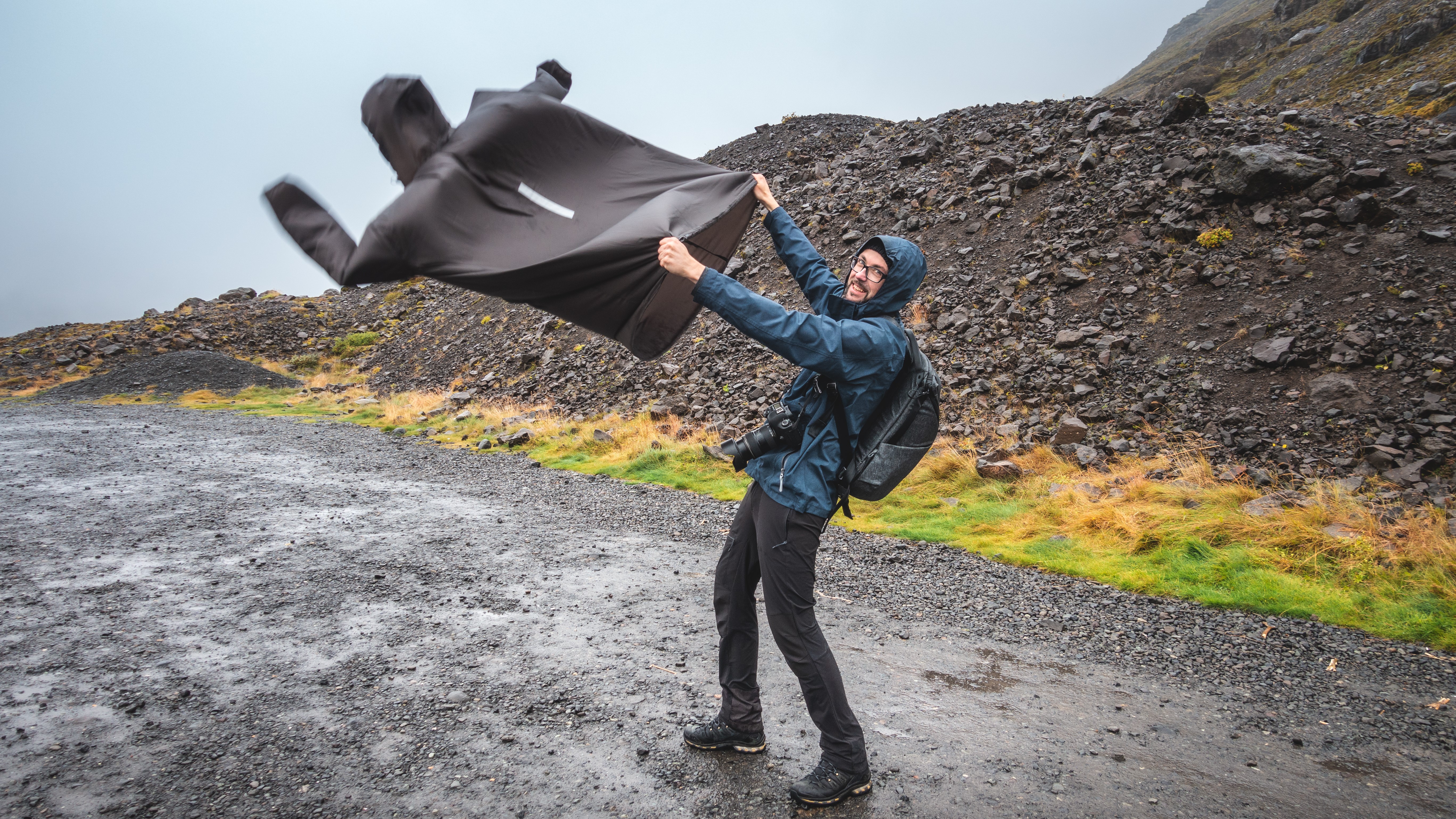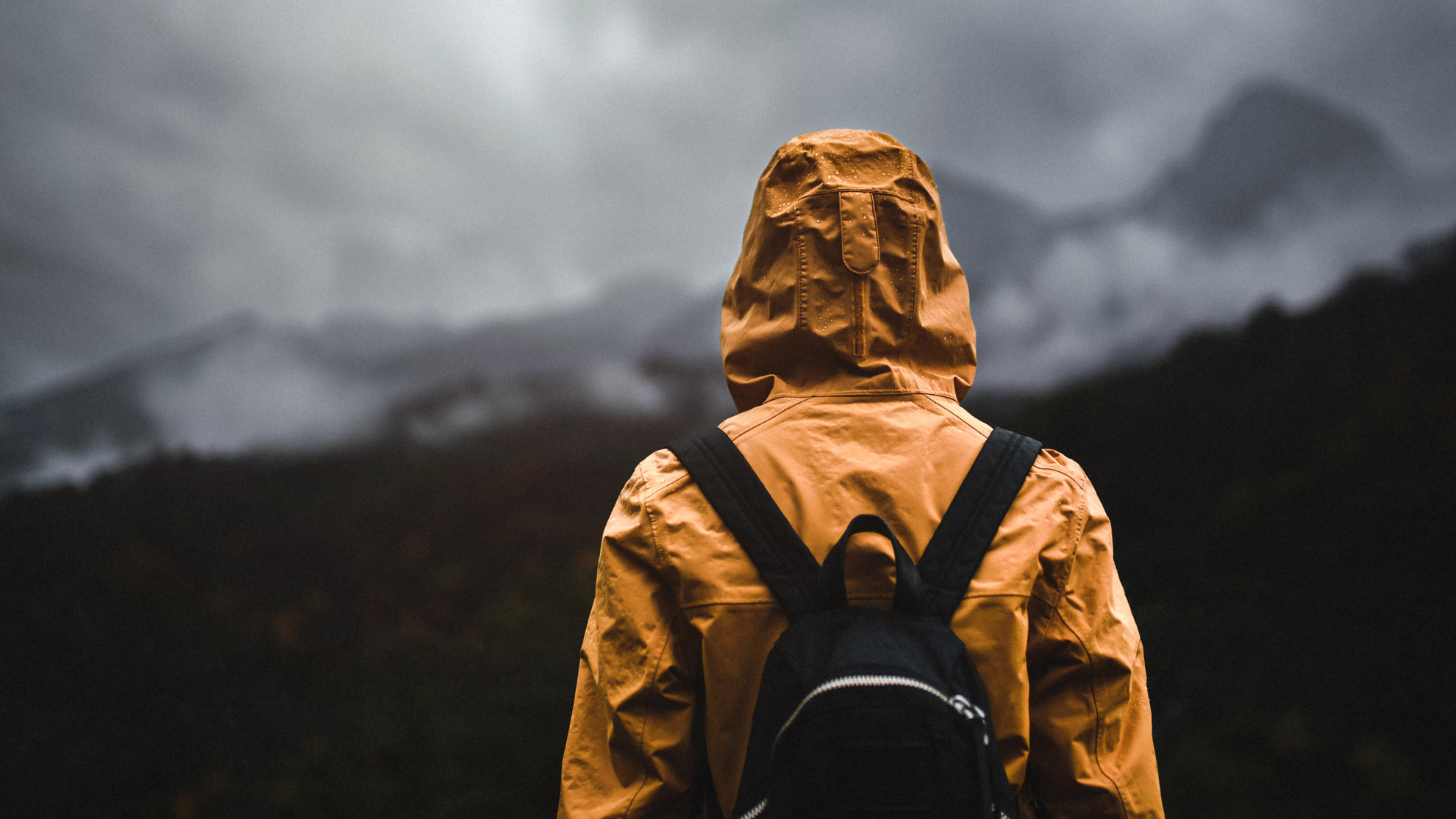Poncho vs rain jacket: what's best for rainy day hikes?
Wondering what kind of wet weather protection you need for hiking? Check out our comparison of poncho vs rain jacket for hiking

You probably know that a waterproof jacket is an essential part of your hiking kit. Without one, you get soaked and cold, and once you get cold, you’re at risk for hypothermia, or even just a very unpleasant time on the trail. This is common sense if you like to hike in the Pacific Northwest, east coast, the UK or anywhere with lots of waterfalls and rainforests.
Some hikers, however, prefer to just carry a lightweight poncho and throw it on without breaking stride whenever wet weather comes, wings flapping away like a bat storming down the trail. They might not have the trail credibility of rain jackets, but when we gave them a go, we realized that they do have certain benefits and might be worth a second look for some hikers, especially since a good waterproof jacket can cost a fair sum these days. If you’re wondering what kind of wet weather protection you need, check out our comparison of poncho vs rain jacket for hiking.

What is a rain poncho?
You know what a waterproof jacket is, no doubt, but what exactly is a rain poncho? This simple piece of wet weather gear comprises a simple, loose-fitting cape made from waterproof material. The cheapest ones are disposable and made from plastic, meant for a single use, such as those you can pick up at Yosemite National Park before hiking to Vernal Falls, while outdoor brands make better quality, reusable ponchos made from breathable, waterproof fabrics. Rain ponchos usually come down to your knees and have hoods. They don’t usually have sleeves, but are cut to just below your elbow or wrist so your hands are exposed. Now that that's out of the way, let's find out how they perform next to waterproof jackets for your wet weather adventures.

Poncho vs rain jacket: weight and packability
Because a poncho doesn’t have zips and pockets, it’s usually going to be very light and packable, which means you can easily fold it away into your backpack when the rain stops. Waterproof jackets aren’t the bulkiest of gear by any means, but hardshells and even hardshell hybrids like the Columbia OutDry Extreme Mesh Waterproof Hooded Shell Jacket definitely don’t fold up quite as small in return for better protection.
Poncho vs rain jacket: wet weather protection and coverage
A poncho will be pretty watertight, thanks in large part to the lack of seams and zippers that can let moisture seep through. They also offer quite a bit of coverage, coming down close to your knees which may mean you don’t need to wear rain pants and you can sit down on a wet rock for lunch without getting a soggy bottom. Some ponchos don’t cover your forearms, which would be a definite drawback, but overall ponchos offer excellent rain protection and coverage, and are often even big enough to wear over your hiking backpack, meaning you don’t also need a rain cover for it.
A waterproof jacket might have more seams and zips and not provide as much coverage, but it has handy drawcords, straps and other fastenings to seal your hood, sleeves and hem and keep a driving rain out.

Poncho vs rain jacket: warmth and breathability
Neither option is usually designed to be insulated, though such variations do exist, while the loose nature of a poncho lets a nice breeze through, which means that you’re likely to stay cooler in it. Your poncho will also allow vapor from perspiration to vent out keeping you cooler and drier. Some even have vents.
Advnture Newsletter
All the latest inspiration, tips and guides to help you plan your next Advnture!
Rain jackets tend to trap a bit more moisture from perspiration, so they’re not as breathable, however they will do a better job of holding your body heat in when it’s cold out, and of blocking the wind. So as you can see, which is better depends on whether you’re hiking in warm or cold conditions, and whether you have enough insulation underneath.
Poncho vs rain jacket: fit and style
A poncho is loose and flappy, like a cape. They’re certainly not the most stylish options, and often will come in one size, or only offer S/M and M/L. More importantly, all that flapping around can be downright impractical. Your poncho can get snagged on branches and slap your hiking partner in the face if you’re not careful, and it can make it difficult to stop and extract things from your backpack when a gale is blowing.
Meanwhile a well-fitting rain jacket can be pretty stylish, depending on your idea of style of course – enough so that you might wear it for urban adventures too – and its slim-fitting style means no annoying flapping or catching.

Poncho vs rain jacket: versatility and storage
You might not want to wear your poncho around town (also, you might, and no judgement here), but it can double as a picnic blanket and a small tarp. Your most basic versions won’t have any pockets, while some have a chest pocket, but because you can easily reach whatever jacket you’re wearing underneath it, this really may not matter to you.
On the other hand, you might be happy to wear a nice waterproof jacket in all sorts of situations besides hiking, and it should come with loads of handy pockets for storage and easy access to gear and maps.
Poncho vs rain jacket: durability
If you buy a disposable poncho, of course you shouldn’t expect to get more than a couple of uses out of it, while a better quality reusable one will last longer, but all that tree snagging and flapping and using your poncho to sit on wet ground means it might take more abuse than a rain jacket will.
A good quality waterproof jacket should be sturdy and sustain less hard-wearing, and besides the zippers it could last a lifetime if you know how to wash it and take care of it.

Poncho vs rain jacket: price
Though some fancier ponchos have emerged on the market, you can definitely expect to spend less on a poncho than you would a rain jacket. Good, reusable ponchos are often under $100 while some of the best waterproof jackets we’ve tested retail for 10x that price.
| Header Cell - Column 0 | Poncho | Rain jacket |
|---|---|---|
| Weight and packability | No zips or pockets means they're ultra lightweight and packable | Lightweight and packable, but zips and pockets make them bulkier than ponchos |
| Wet weather protection and coverage | Pretty watertight and lots of coverage, though some don't cover forearms | Not as much coverage plus zips can let moisture in, but drawcords and fastenings tamp down the hood, hem and sleeves nicely |
| Warmth and breathability | Very breathable, air flow keeps you cooler | Less breathable, snugger fit blocks wind better and keeps your warmer |
| Fit and style | Loose and flappy, not the most stylish and a little impractical in the wind | Can be stylish enough for urban adventures, no annoying flapping |
| Versatility and storage | Can double as a picnic blanket or tarp, usually no storage | Only one function, lots of pockets |
| Durability | No zips to break but overall less durable, plus flapping and snagging may degrade it faster | Durable with good treatment, less opportunity to snag on branches |
| Price | Usually under $50 | Can cost hundreds of dollars |
Poncho vs rain jacket: the verdict
Now that we’ve run through both options, we think this one probably comes down to how often you plan to use your poncho or waterproof jacket, and where. For occasional use – meaning you live in a more arid climate or don’t hike a great deal – a poncho makes a lot of sense from packability, budget and practicality standpoint. That said, if you hike somewhere very windy or are expecting cold conditions, they can be annoying or inadequate.
If you like to hike a lot and you’re expecting a lot of rain and wind (or do a lot of waterfall hikes) then you’ll probably want to make the investment in a well-fitting rain jacket. You’ll get loads of use out of it and appreciate the pockets for storage and the lack of flapping in the wind. And finally, for warmer weather, a poncho let's you stay cool whereas in cold weather, you'll appreciate the warmth of a rain jacket.
Julia Clarke is a staff writer for Advnture.com and the author of the book Restorative Yoga for Beginners. She loves to explore mountains on foot, bike, skis and belay and then recover on the the yoga mat. Julia graduated with a degree in journalism in 2004 and spent eight years working as a radio presenter in Kansas City, Vermont, Boston and New York City before discovering the joys of the Rocky Mountains. She then detoured west to Colorado and enjoyed 11 years teaching yoga in Vail before returning to her hometown of Glasgow, Scotland in 2020 to focus on family and writing.

